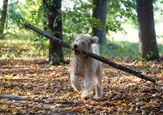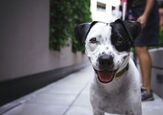It’s a subtle shift that’s often easy to miss in the busy hustle and bustle of our days, but when your cat suddenly stops meticulously grooming themselves, it could be a red flag that something’s happening that requires your attention. For cats, grooming isn’t merely about maintaining a pristine appearance; it’s essential to their health, hygiene, and overall well-being. A sudden change in this self-care behavior could indicate anything from mild discomfort to a serious underlying medical concern.This post will share the reasons why your cat might be grooming less, what steps you can take to make them feel more comfortable, and, most importantly, when it’s time to seek immediate professional veterinary help. Why Grooming MattersFor cats, grooming serves many key functions, beginning with basic hygiene. Through their meticulous licking, cats remove loose fur, dirt, and any debris clinging to their coat, keeping themselves both clean and comfortable.Beyond just cleanliness, grooming helps to regulate their body temperature. Cats can use evaporative cooling to help dissipate heat and cool themselves down by spreading saliva across their fur. This is especially important during the warmer summer days.It’s also fundamental for skin health, as their tongues help to distribute natural oils. This keeps their skin moisturized while preventing dryness and irritation.Additionally, grooming can be a powerful social tool. When cats groom one another, it’s a way of communicating affection, trust, and social bonding. Psychologically, self-grooming has been shown to be calming, a routine behavior cats often use to reduce stress and anxiety.A healthy cat will typically groom themselves several times throughout the day, dedicating considerable time to cleaning every part of their bodies. Their barbed tongues act like tiny combs that untangle fur and remove debris. Their teeth also help with more stubborn knots. Finally, their paws are often moistened with saliva and used as a washcloth to help with harder-to-reach spots like the face and behind the ears. Causes for Decreased GroomingWhen your otherwise meticulously clean cat suddenly starts to neglect their grooming routine, it’s a red flag that you don’t want to ignore. This change can stem from many factors, ranging from environmental stressors to severe underlying medical conditions. Understanding these potential causes is the first step in getting the help and relief they need.Medical reasonsOften, a change in grooming habits is a direct symptom of feelings of pain or discomfort, making it difficult to physically move in the ways necessary to groom themselves. If a cat is hurting, the last thing they’ll want to do is bend, stretch, or twist into the various necessary positions. This pain can manifest in many ways: Arthritis or joint pain, especially common in older cats, can make movement painful.Dental problems like gum disease, tooth resorption, or abscesses can cause severe pain in the mouth or jaw, making licking unbearable.Spinal issues or injuries might restrict flexibility and cause discomfort when trying to reach certain areas.Abdominal pain or organ issues can make a cat feel unwell, leading to a disinterest in self-care and grooming.Wounds, abscesses, or skin infections are often painful to the touch, causing a cat to avoid grooming the affected area, or even grooming altogether due to generalized discomfort.Beyond localized pain, a cat’s grooming habits can suffer due to various underlying illnesses. Systemic diseases can leave your cat unwell, leading to lethargy or a lack of energy for typical daily activities (like grooming). Possible illnesses include: Kidney disease, which can cause nausea and weakness. Diabetes, leading to dehydration and lethargy. Hyperthyroidism, which can cause weight loss and muscle weakness despite an increased appetite.Various forms of cancer, which can cause widespread discomfort and poor health. Simple fevers or general feelings of unwell from a common infection can also impact your cat’s ability to groom. Obesity can also significantly impact your cat’s ability to move as needed for grooming. Overweight cats often struggle to reach certain areas of their body, particularly their back and hindquarters, making thorough grooming impossible. The extra weight can also contribute to existing joint pain, further limiting their mobility and desire to groom.If your cat is experiencing nausea or gastrointestinal problems, they will likely feel unwell enough to decrease their appetite and cause lethargy, leading to a disinterest in grooming.Finally, neurological issues can directly impact a cat’s ability to groom. Cognitive decline in older cats, similar to dementia in humans, can lead to a forgetfulness of routine behaviors, including grooming. If your cat has suffered a stroke or other neurological events, it may affect their motor skills and coordination, making the precise movements required for grooming difficult or impossible.Environmental and Behavioral FactorsWhile medical conditions are the most common cause, a cat’s emotional state and environment also play a crucial role in their grooming habits. Stress and anxiety can significantly impact normal behaviors, including grooming. Cats are creatures of habit, and disruptions to their routine can be incredibly upsetting. Common stressors include:Significant changes in routine, such as introducing a new pet, a new baby, or moving to a new home.Loud noises, home renovations, or ongoing conflict in the home can create a constant state of unease. Separation anxiety can also manifest in neglect of self-care. Prolonged stress can profoundly impact a cat’s overall well-being, leading them to neglect self-care activities like grooming.Similarly, depression or grief can cause a cat to withdraw and lose interest in their usual routines. This can occur after the loss of a companion animal or a human family member, or following other major life changes that deeply impact their emotional state.Aging naturally brings a decline in various bodily functions. Even without specific diseases, older cats often experience behavior changes. They may experience:A general decline in energy levels, making the effort of grooming less appealing.The onset of arthritis and other age-related discomforts make the physical movements required to groom difficult.Cognitive dysfunction, as mentioned earlier, can also contribute to forgetfulness or inability to perform grooming routines.Finally, while it’s less common for a prolonged failure to keep up with grooming, extreme heat or humidity can impact the thoroughness of a cat’s self-care. In very warm conditions, a cat may focus more on cooling behaviors, such as lying on cool surfaces or panting, rather than engaging in regular grooming sessions. However, this is unlikely to cause them to completely stop grooming unless accompanied by other symptoms.

























